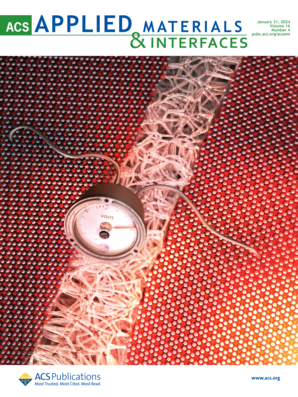Frontiers in Bioinspired Polymer-Based Helical Nanofibers from Electrospinning
IF 8.3
2区 材料科学
Q1 MATERIALS SCIENCE, MULTIDISCIPLINARY
引用次数: 0
Abstract
Helices are among the most significant structures in nature, representing an emerging group of materials distinguished by their unique helical geometry. Recently, helical nanofibers have attracted considerable attention due to their exceptional structural characteristics and versatile applications in various fields, including tissue engineering, biomedicine, nanotechnology, and chiral materials. Therefore, developing methods to fabricate biomimetic helical fibers on demand, which can exhibit a diverse range of physical properties and forms, is of great interest across multiple disciplines. Despite the significant interest in helical fibrous materials, the fabrication of such complex structures at the micro- or nanoscale level remains a major challenge. Electrospinning offers a simple and versatile technique for producing micro- and nanofibers in various helical shapes. This review systematically summarizes and classifies the state-of-the-art advancements in electrospun helical nanofibers into four categories based on their forming mechanisms: viscoelastic asymmetric contraction, bending instability motion, jet-induced buckling response, and rotary winding molding. Additionally, the recent applications of these helical nanofibrous materials in areas such as environmental remediation, interactive textiles, and biomedical engineering are also summarized. Furthermore, the current challenges and future perspectives in the field are put forward. We anticipate that the insights provided will contribute to the rational design of advanced artificial helical materials, thereby enhancing their practical applications in the future.

静电纺丝生物启发聚合物基螺旋纳米纤维的研究进展
螺旋是自然界中最重要的结构之一,代表了一组新兴的材料,其独特的螺旋几何形状使其与众不同。近年来,螺旋纳米纤维以其独特的结构特性和在组织工程、生物医学、纳米技术、手性材料等领域的广泛应用引起了人们的广泛关注。因此,开发按需制造仿生螺旋纤维的方法,可以表现出多种物理性质和形式,是多个学科的极大兴趣。尽管人们对螺旋纤维材料非常感兴趣,但在微纳米尺度上制造这种复杂结构仍然是一个主要挑战。静电纺丝为生产各种螺旋形状的微纤维和纳米纤维提供了一种简单而通用的技术。本文从粘弹性不对称收缩、弯曲不稳定运动、射流诱导屈曲响应和旋转缠绕成型四方面对电纺螺旋纳米纤维的研究进展进行了系统的总结和分类。综述了近年来螺旋纳米纤维材料在环境修复、交互纺织品和生物医学工程等领域的应用。最后,提出了该领域目前面临的挑战和未来的展望。我们期望这些见解将有助于先进人工螺旋材料的合理设计,从而增强其在未来的实际应用。
本文章由计算机程序翻译,如有差异,请以英文原文为准。
求助全文
约1分钟内获得全文
求助全文
来源期刊

ACS Applied Materials & Interfaces
工程技术-材料科学:综合
CiteScore
16.00
自引率
6.30%
发文量
4978
审稿时长
1.8 months
期刊介绍:
ACS Applied Materials & Interfaces is a leading interdisciplinary journal that brings together chemists, engineers, physicists, and biologists to explore the development and utilization of newly-discovered materials and interfacial processes for specific applications. Our journal has experienced remarkable growth since its establishment in 2009, both in terms of the number of articles published and the impact of the research showcased. We are proud to foster a truly global community, with the majority of published articles originating from outside the United States, reflecting the rapid growth of applied research worldwide.
 求助内容:
求助内容: 应助结果提醒方式:
应助结果提醒方式:


